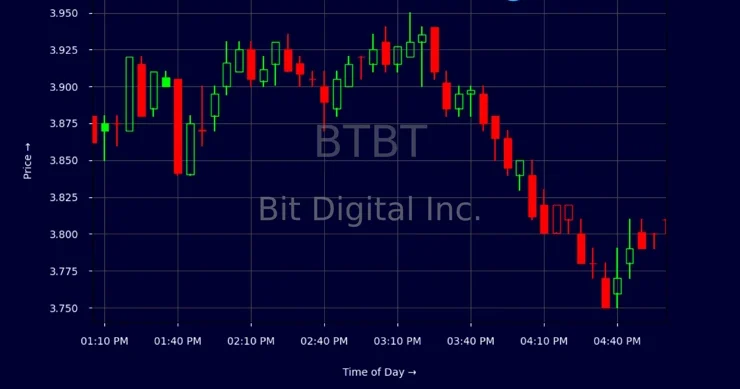Biotech leadership is more than dealing with research timelines and shareholder expectations. It involves a steady hand during times of internal turmoil and high-stakes decision making. In contrast to more conventional industries, biotech firms are influenced not just by market pressures but also by the scientific respect and authority of their leadership groups and the capacity to ride out turbulence without imperiling innovation. Internal conflicts, board conflicts, and executive role changes can shape a company’s destiny as much as the failure or success of a clinical trial.
This played out in 2018 when San Diego-based RNA therapeutics company Arcturus Therapeutics had an internal conflict within its leadership. The firm was co-founded by Joseph E. Payne in 2013, who was its President and CEO at the time of its establishment. During his tenure, Arcturus had built up its own internal RNA technology platform consisting of the LUNAR® delivery platform and STARR® self-amplifying mRNA system. The firm was emerging as a compact but specialized player in the expanding sector of RNA-based therapeutics.
In February 2018, Arcturus issued a statement saying its board had ousted Payne from the CEO position. The leadership issues and governance were cited by the company, but it did not make public any details of the allegations at that time. After being ousted, Payne filed a suit against Arcturus, claiming wrongful discharge and breach of fiduciary duty by the board members. He disagreed with the move and pleaded for reinstatement, citing that the action was not in the best interest of the company.

The developments stirred public attention and caused concern among investors, stakeholders, and science partners. Arcturus was in its development stage, depending mainly on a leadership team that had been actively engaged in its scientific approach. The circumstances put a strain on the board to reconcile internal management with the necessity of keeping external confidence high. The share performance of the company during the period indicated the uncertainty. Nasdaq records suggest that the stock price of Arcturus fluctuated in the weeks after Payne’s exit.
By May 2018, the conflict had shifted toward being resolved. There was a settlement that enabled Payne to come back to Arcturus as CEO, and the structure of the board was changed. With the new board, Payne was reinstated in his position as president and CEO of Arcturus and Pad Chivukula, who stepped down in February, as chief scientific officer and chief operating officer.
The company reported terms in a May 29, 2018, press release and filed related updates with the U.S. Securities and Exchange Commission. This was the official conclusion to a several-month dispute that had garnered considerable scrutiny from industry watchers.
What set this episode apart from other executive reorganizations in the biotech sector was how it was handled internally and externally. Throughout the dispute, Payne kept lines of communication open to scientific personnel and collaborators with the aim of maintaining agreement on Arcturus’ central research objectives. Internal sources, then, such as employee statements and coverage by the media in publications like FierceBiotech and Reuters, reported that the technical personnel of the company were primarily left intact and continued working on development in the course of leadership change.
Payne’s return didn’t indicate a straightforward reinstatement but instead signified a change in the manner in which Arcturus positioned itself in the future. After his reinstatement, the company ventured into clinical development and grew its international partnerships. This included its ultimate collaboration with Meiji Seika Pharma in Japan and CSL Seqirus for vaccine development. The post-boardroom struggle period became one of strategic expansion and greater prominence for the company’s RNA platforms.
The conflict over leadership underscored deeper governance issues at early-stage biotech companies. Most newly found firms have thin boards, centralized decision-making, and minimum outside direction. When these companies expand and take on more capital, power struggles can arise regarding the course of research, ownership distribution, and executive control. Payne’s case was a study in how executive removal and reinstatement can influence perception and policy within a firm.
Reactions from investors also influenced the way the situation went. Analysts who covered Arcturus in 2018 highlighted the potential for leadership uncertainty among pre-commercial biotechnology companies. Investor sentiment, though, stabilized somewhat once Payne had returned, as Arcturus posted news of its development milestones and provided clarity on its organizational hierarchy. By 2020, the firm was already working on the development of a COVID-19 vaccine candidate through its proprietary sa-mRNA platform, ready to contribute to the pandemic response globally.
Although Payne’s leadership style has not been widely sketched in public records, his behavior during this time indicates technical continuity and internal unity. Public statements and interviews published after the reinstatement highlighted data-led planning and cautious public involvement. This strategy could have contributed to stakeholder confidence at a time when biotechnology firms are particularly exposed to external skepticism.
By early 2025, Arcturus had built a presence within the global RNA therapeutics market. The company had over 500 patents and patent filings worldwide and had obtained regulatory clearances for its self-amplifying mRNA COVID-19 vaccine, KOSTAIVE, in Japan as well as the European Union. These milestones followed a season of internal restructuring and strategic realignment that had started in 2018.
Joseph E. Payne’s management of Arcturus’ executive leadership issue provides insight into the way biotech leaders navigate not only scientific progress but organizational stability as well. His experience illustrates the nuanced subtlety of governance in upstart pharmaceutical firms and demonstrates how internal strife, when addressed with strategic intent, does not necessarily halt long-term expansion.





